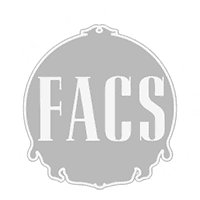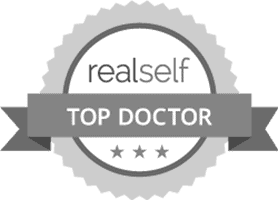Post-Surgical
Care
Recovery After Body Lift Surgery






Body lift is a major surgery that often requires 4 to 8 weeks of recovery. Since more than half of our patients are out-of-state, we typically ask for you to stay locally after a body lift surgery. This is because, a body lift outcome is markedly dependent on post-operative care that a patient receives. As Dr. Agha often says, half of the surgery depends on him and the other half on the patient. Although, he has done his half hundreds of times, this may be your first rodeo. Thus, the success of the surgery rides on patient compliance and thorough adherence with our post-op instructions.
- Start optimizing your nutrition 3-4 weeks before surgery
- Book your extended stay lodging close to the office. Our office is only a few miles from the Orange County Airport and there are many affordable hotels nearby.
- Purchase your post-op dressings.
- Purchase a toilet raiser and a walker
- Lease an electric recliner chair
- Take 120 to 150 grams of protein per day. We recommend ProCare which has protein and many vitamins for tissue repair and healing. You can obtain this product at: www.nutressential.com
- Plan to stay local for about 4 weeks
- Bring a close family member for support and care
- Do not shower until cleared to do so. Tap water has pseudomons which is a nasty bacteria and can lead to infection
- It is wise to allow eight weeks before exercising. Every situation is unique, so make sure to ask Dr. Agha when it is okay for you to get back to your usual activities.
Please watch and follow the instruction of these videos.
Recovery from Body Lift Surgery
Dr. Agha performs his lower or upper body lift procedures at Newport Surgical Arts, an Accrediated Ambulatory Surgery Center.
For out-of-state patients, you should plan to stay locally for 4 weeks after a lower body lift, and 3 weeks for upper body lift.
- Day of Surgery – When you wake up from your procedure, you will be in the recovery room and will be wearing a binder or garment. You should plan to wear the compression garment for four to six weeks following surgery.
- Caregiver – Both lower and upper body lift procedures involve multiple surgical procedures performed in one setting. Thus, it is very important to have someone who can assist you with getting around, preparing meals, cleaning you, helping with walking and bathroom trips, taking medications, drain care, driving, dressing change, etc. for at least two weeks.
- Nausea– Most people are nauseated during the first 3-5 days. To reduce this, take your nausea pill one hour before taking your pain medication or antibiotics.
- Sleep – During the first week after your lower body lift, attempt to sleep on your sides or in a recliner chair. Also, keep your legs slightly bent at the hips and knees. This ensures that the tension on your abdominal incision is minimized, reducing pain and resulting in a thinner scar.
- Heparin injections – As the major risk of Plastic Surgery is deep vein thrombosis (DVT), you will be given prescriptions for heparin injections. These are blood thinner injections that should be started before any travel to California and continued for 3 weeks after surgery.
- Painkillers – You’re likely to feel sore for a few days, but you should be up and around in 24 hours. Most of your discomfort can be controlled by the prescribed painkillers.
- Shower– Do not take a shower or bath until cleared by Dr. Agha. Your incisions must be healed and sealed closed and all your drains must be out before taking a shower. This is because tap water has pseudomons bacteria that can lead to surgical site infection and openings.
- First Post-operative Visit – We will see you on Day 5 for your first post-operative visit. At this time.
- Swelling – Swelling will take 3-6 months to subside.

10. Driving – You should not drive for at least 3 weeks after any surgery. Furthermore, it is not safe to drive a car within 24 hours of taking pain medication as your reflexes and alertness may be altered.
11. It is important that the surgical incisions are not subjected to excessive force, abrasion, or motion during the time of healing.
12. Walking – You will probably be unable to stand fully upright for 10 to 14 days after a lower body lift. Even if you can’t stand straight, it is still important to start walking as soon as possible, usually the evening of surgery. This is the best way to reduce the chance of getting a blood clot in the legs.
Recovery from Body Lift Surgery
13. Light Exercise – Dr. Siamak Agha recommends light exercise to reduce swelling and prevent clotting. Light exercise includes walking, stretching, and moving arms and legs while sitting. If you should feel pain or pulling from the scar area, cease the movement.
14. Activities – During the first week after surgery, you want to avoid activities that raise your blood pressure. This could cause bleeding at the operative site, which could result in a hematoma (collection of blood). Walking is the safest exercise, especially during the first week. Avoid exercises which directly stress the area of your surgery for a full six weeks. After this period, cardiovascular activities, such as brisk walking can be initiated. Running at this point may be premature. Avoid heavy lifting, contact sports, and jogging for up to 8 weeks. Eight weeks after body lift surgery, you will be nearing your pre-operative level. Avoid pulling at the surgical area to maximize healing and minimize scarring.
15. During the early phase of healing, avoid pulling of the operative site as this can worsen swelling and fluid accumulation. This could cause development of a seroma (fluid collection) or cause separation of the incision (opening of the suture line or widening of the scar). Even though the skin is closed, there are many activities taking place beneath the skin.
16. Healing – You will need a minimum of 6 weeks to recover and heal from your procedures.
17. Scarring– Every person’s body is different, and many factors contribute to scar healing. Your scars will be firm and pink for about six weeks. Non-smokers and those who follow the Enhanced Recovery Nutritional Supplements routine have a better chance of rapid healing and thinner scarring. Expect to wait at least nine months before your scars lighten in color and become as flat as the rest of your skin. Although they will never disappear completely, scars will not show under most clothing, even bathing suits.
18. Follow-ups – Regular check-ups protect against complications.
19. Emergencies – Although some discomfort is expected, be sure to tell us if:
- There is an increase in swelling, pain, redness, drainage, or bleeding in the surgical area.
- You develop fever, dizziness, nausea or vomiting, or a general ill feeling.
If you experience shortness of breath, chest pains, or unusual heartbeats, call 911 immediately since these may be due to deep venous thrombosis. Should any of these complications occur, you may require hospitalization and additional treatment.
